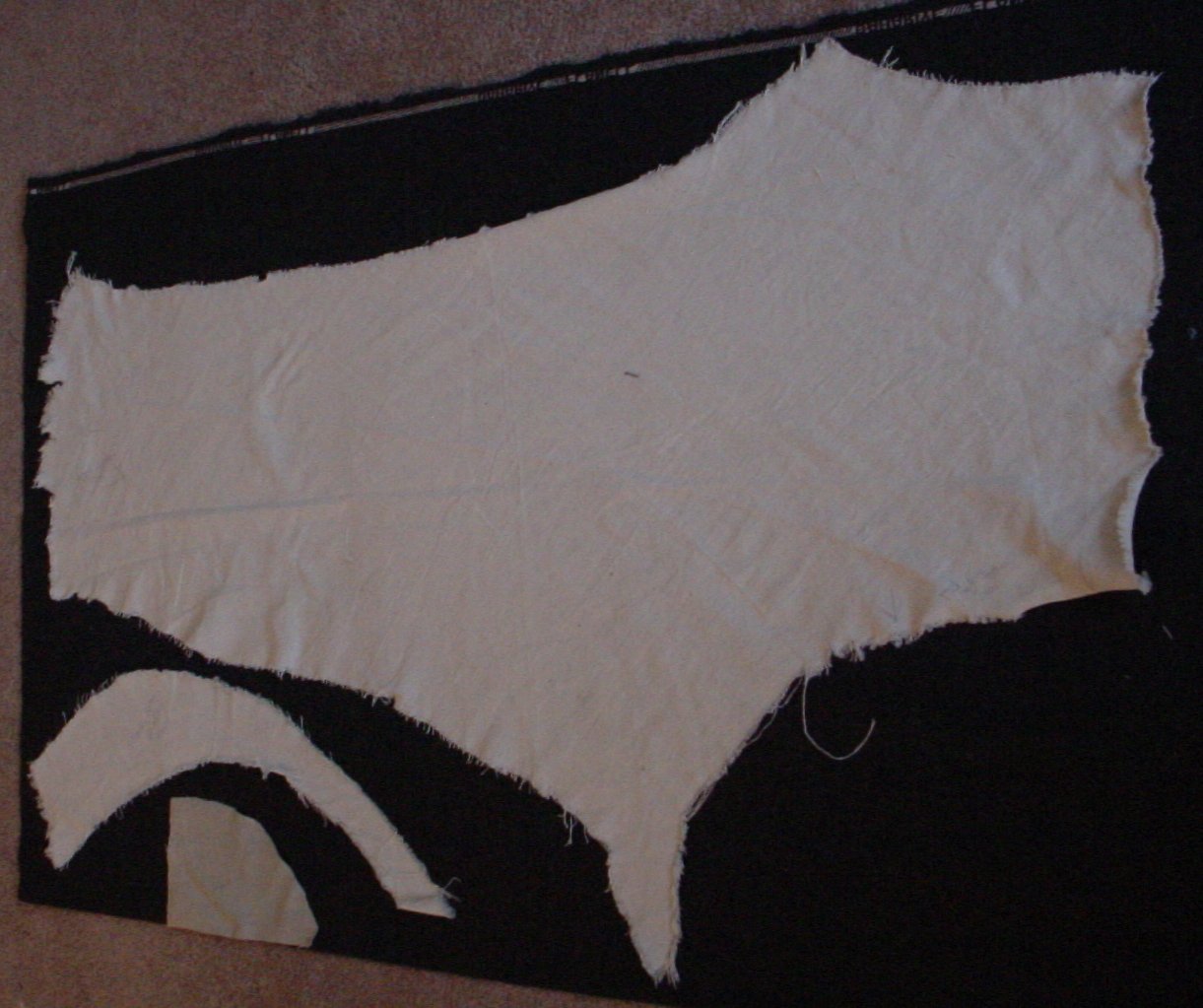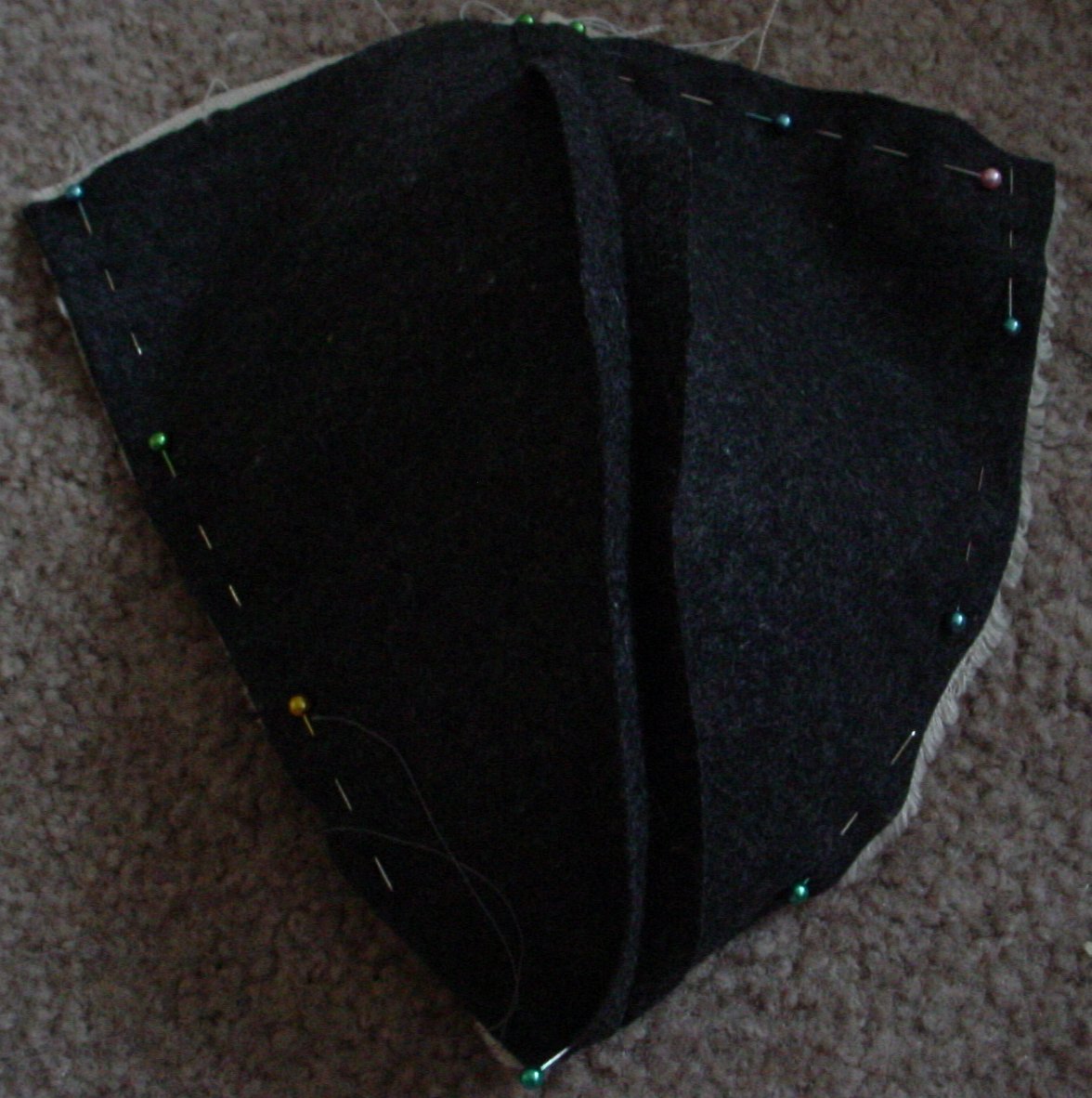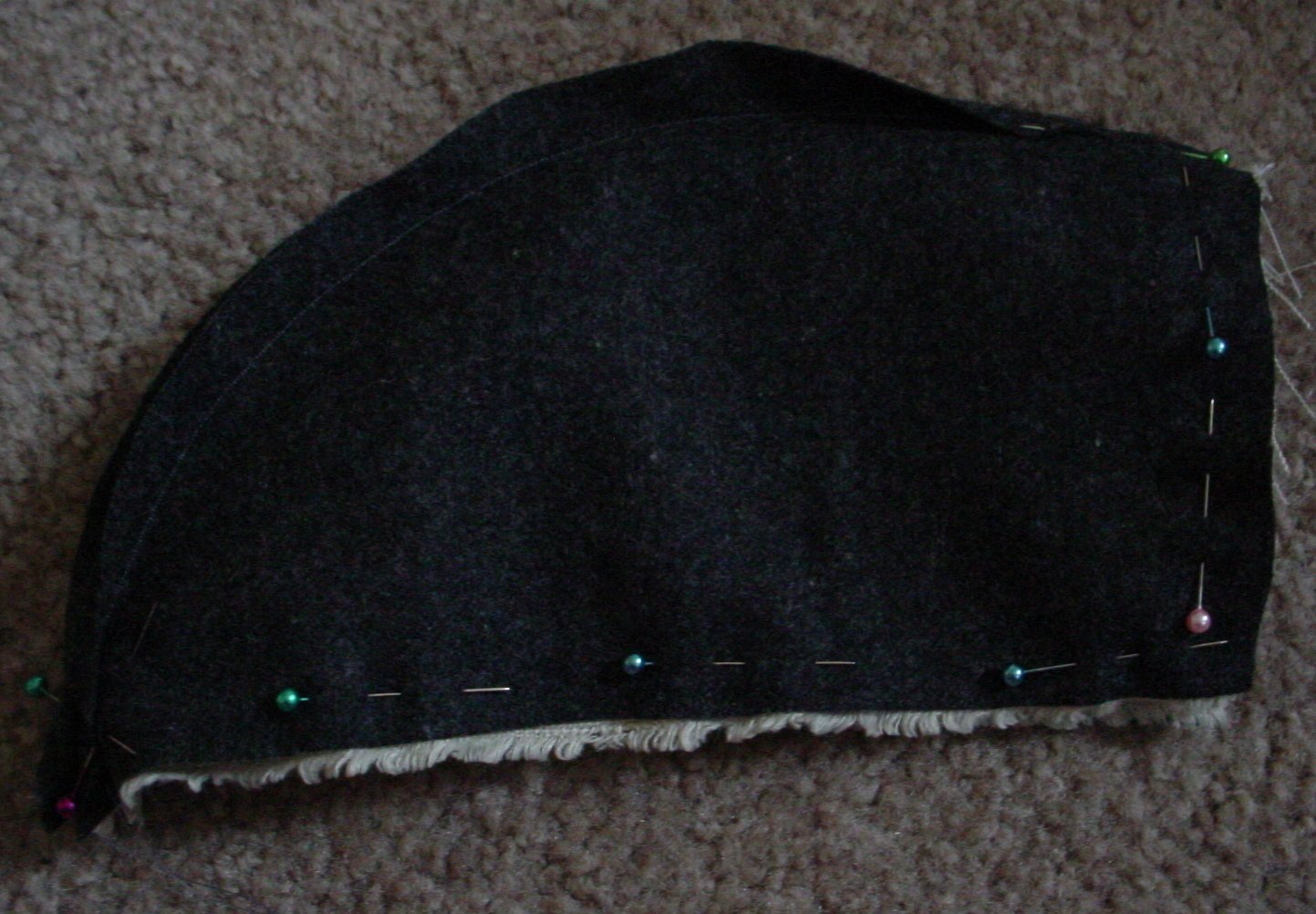Hoes
Hoes
Hoes are perhaps the strangest item to make. They are a fitted leggings type garment with a codpiece at the front to cover the opening. Each leg is made in one piece, sometimes with an extra piece to join at the back with the seam at the centre back. There are two types - split leg hoes and full hoes. Split hoes have two individual legs, which are not joined at the crotch or rear, while full hoes are joined up and have a 'codpiece' covering the genital area. The first type is rather old fashioned by 15th century and you need good long braies to go with them. However if you find you always split your hoes at the crotch and you play low level characters; go ahead.
There are two schools of thought when it comes to planning the waistband on your hoes - one is the high waisted while the other is the hipster look. The high waisted hoes design is the one that has been popular for the longest time, but newer research seems to indicate that the hipster style was more authentic. Others believe that the hipster style was used until the later 1470’s but made room for the more fashionable high waisted hoes, which would allow the showing off of men’s behinds. Hoes should be reasonably tight fitting, the more active your profession the looser the hoes will be; but even if your hoes are not too tight they should still follow the line of your legs rather than hiding them. You should be aiming to get them as tight as you can without splitting them every time you wear them. One thing that helps in this is to make sure they sit up in your crotch rather than bagging down; this seems to help.
There are two schools of thought when it comes to planning the waistband on your hoes - one is the high waisted while the other is the hipster look. The high waisted hoes design is the one that has been popular for the longest time, but newer research seems to indicate that the hipster style was more authentic. Others believe that the hipster style was used until the later 1470’s but made room for the more fashionable high waisted hoes, which would allow the showing off of men’s behinds. Hoes should be reasonably tight fitting, the more active your profession the looser the hoes will be; but even if your hoes are not too tight they should still follow the line of your legs rather than hiding them. You should be aiming to get them as tight as you can without splitting them every time you wear them. One thing that helps in this is to make sure they sit up in your crotch rather than bagging down; this seems to help.
Hoes Wool
The first problem is the wool to make them, it must stretch on the bias (45 degrees to the salvage edge of the material) and it must also be a good quality solid weave. Without both these your hoes will forever split. Good hoes wool is hard to find so buy it whenever you see it.
Making Hoes
Hoes are a rather strange shape, as they go in and out as your leg does. The best way to make the pattern is like this:
Material: Wool with good stretch on the bias as described above. You need about 1.5m or more if your material is narrow. Colours: Any appropriate to your station. Your first pair should be a single basic colour.
- Get a large piece of scrap material hold it at 45-degree angle.
- Then fold the top corner over and tie it round your waist with some string.
- At this point you need some help from a close friend, as the most you can wear for this is underpants! You get said friend to wrap the material round your leg pinning it at the centre-back in a straight line down the leg.
- Then cut away some of the excess material between your legs (make it a real close friend!). This gives you a basic pattern piece.

- You also need a piece each side to fill the gap where your bottom is, a sort of half banana shape and needs to go tight through your legs.
- Once you have your basic pattern you need to prepare your wool by laying it flat on a large surface. The pattern pieces are cut out at 45° to the edge of the material so you get the stretch where you need it. (the pattern is just shown on the wool, not at the best position)
- Before you start sewing try and make sure all of the pieces will fit well together. Be brave, pin the pieces together while it is on to make sure everything is ok.
- Sew the leg seams, then add the seat.

 The codpiece is made of two pieces, sewn together along the curve. The codpiece would also be lined. Sew together inside out (as shown on the right picture) then pull inside out and sew shut.
The codpiece is made of two pieces, sewn together along the curve. The codpiece would also be lined. Sew together inside out (as shown on the right picture) then pull inside out and sew shut.- Once you have made both the inner and outer hoes, try them on together. Then pin them together along the waist band. You need to fit the waist so it goes in over your hips.Make sure you have worked out the reverse sides properly. Sew the waist together and reverse the hose to the right way around.
- Strengthen the waist because you use points to tie your hoes to your doublet to hold them up – I would suggest either a leather or canvas band here. You can just reinforce the point holes or all along. You should put several sets of point holes round the waist; either side of the codpiece, sides and 1 or 2 centre-back is normal, as is not doing up the back one.
- Lastly, add the codpiece. You should only sew the front of the hoes up to below your genitals; the codpiece is attached just below this so that it forms a second bag to hold you in.
- Don't forget the point holes to hold it up!
Hoes should be lined, but this can cause problems with stretch. If you are unhappy with lining hoes you should wear good long braies. At the ankle you can either leave the bottoms straight, in which case make them longish, or, much better, either have a stirrup or a full foot (see Short Hoes).
